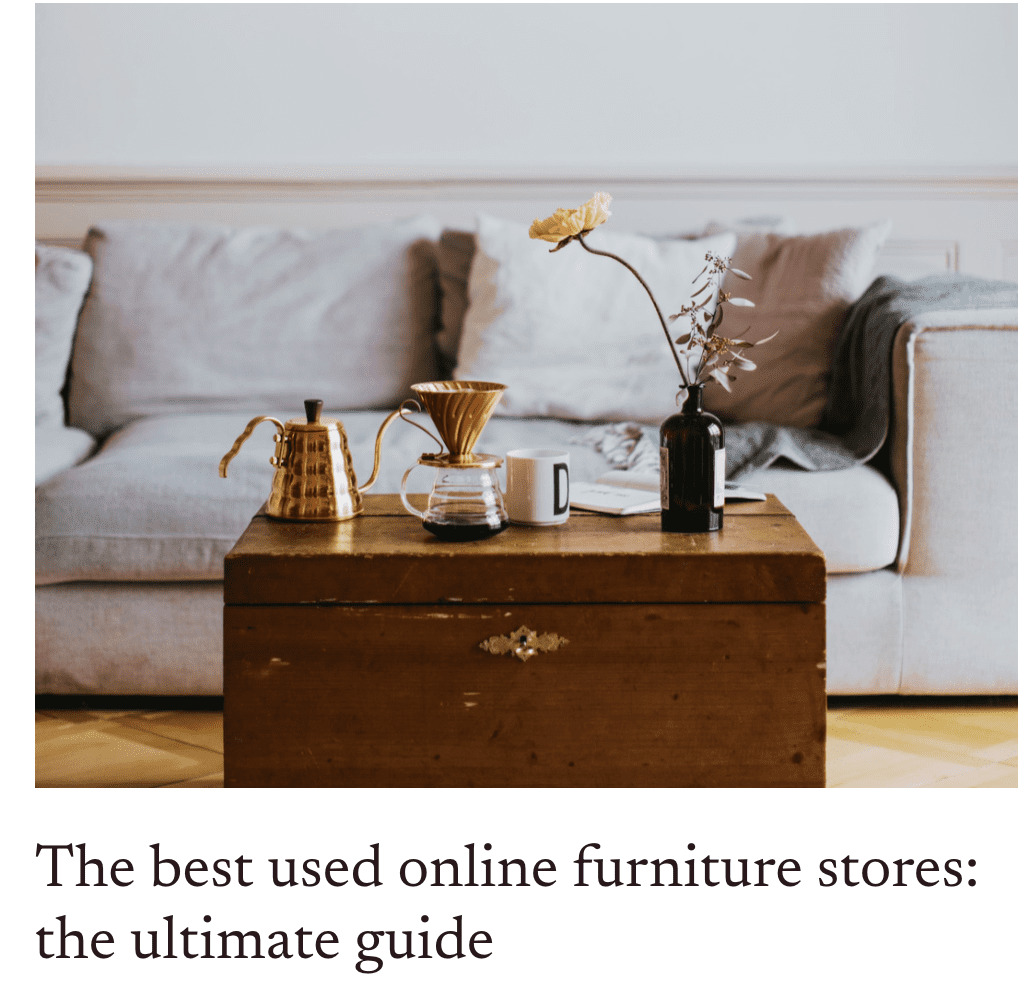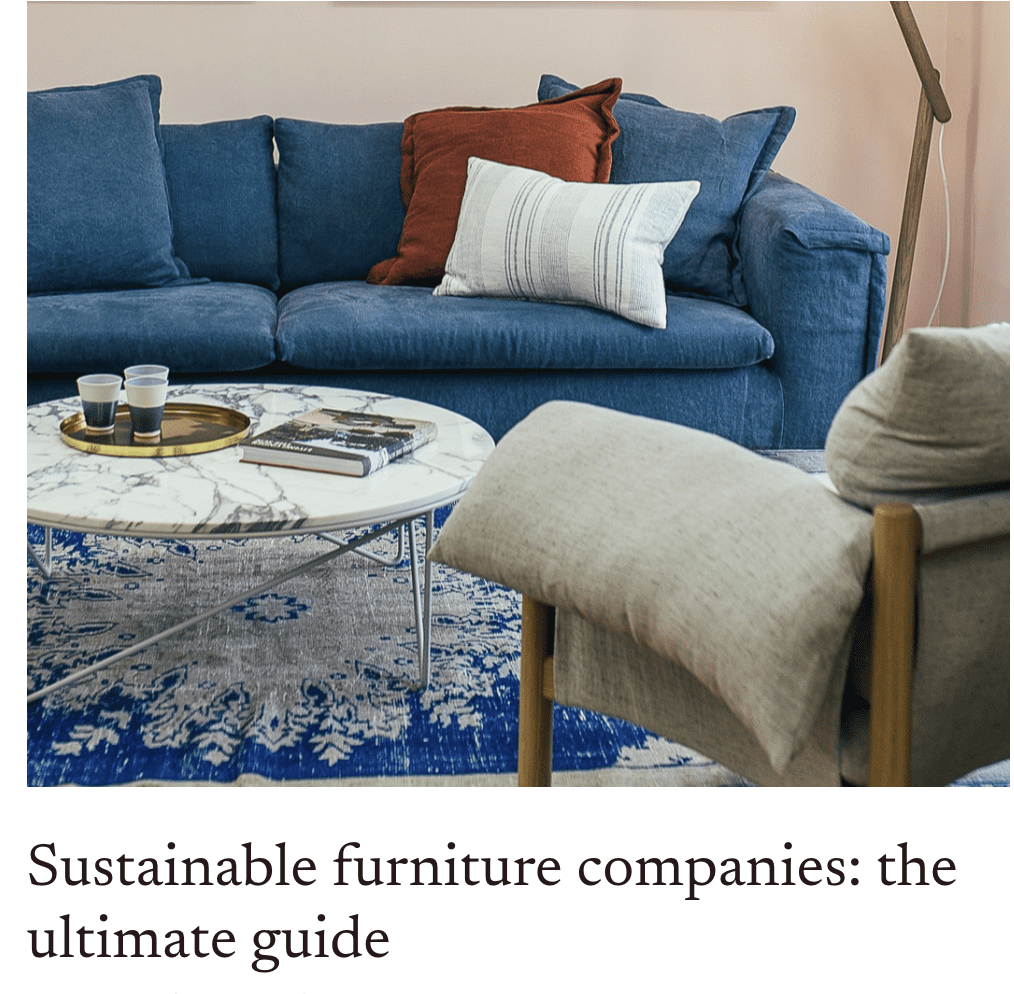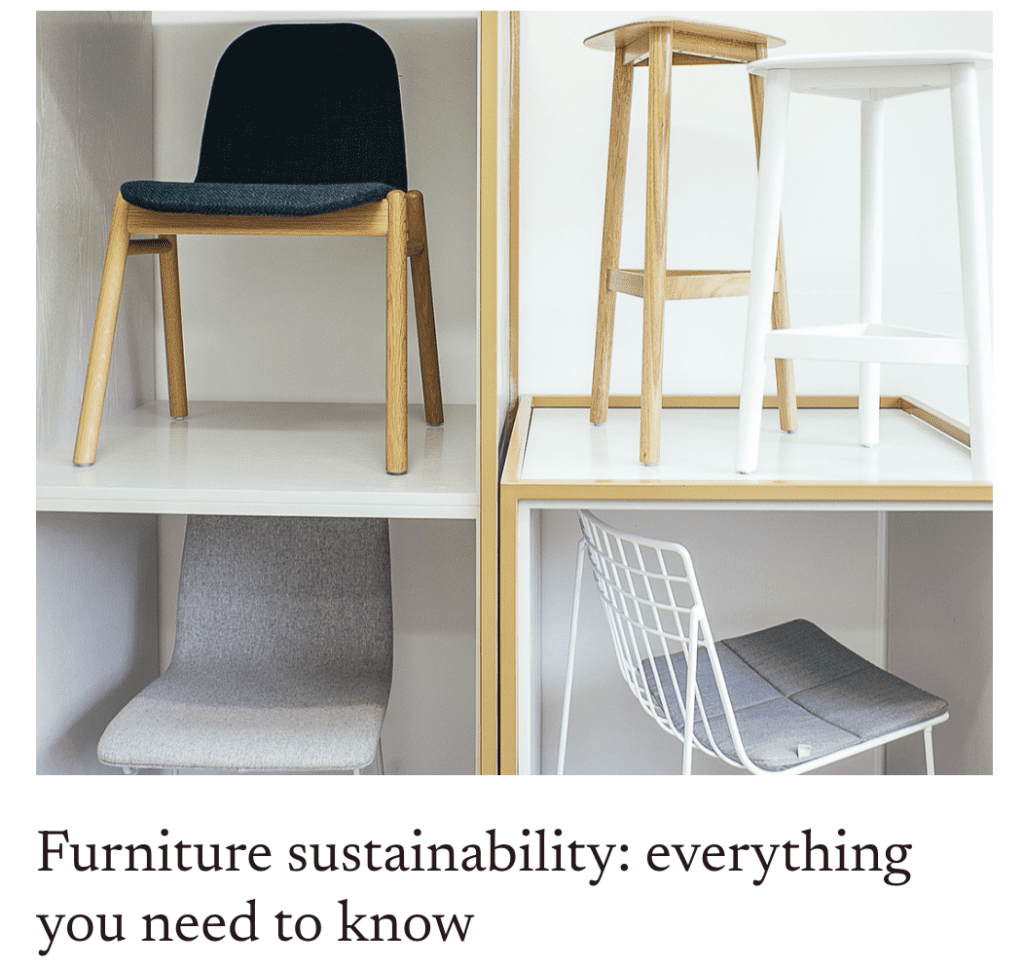In this post: I look at recent research on vintage furniture trends from top furniture resellers and share the implications for your home design.
When you hear the words “vintage furniture trends” your mind may automatically flash to an old dusty antique store making you wonder: what could possibly be new in old furniture? If that’s your mental image, it’s time to look again. These days, there’s nothing stodgy about the vintage furniture market.
The top vintage furniture trends for 2023
1. The sky’s the limit


After doing quite a little bit of research, the biggest news among vintage furniture trends seems to be the popularity of vintage furniture itself. According to Statista, the used furniture and home goods market has increased more than 50% since 2015 and they project it will continue to grow.
In fantastic podcast I recently listened to from Chairish called In with the Old, Why Vintage Furniture is the New New, I learned some new things about vintage furniture trends. In this episode, host Michael Boodro spoke with three powerhouse experts on vintage furniture trends: interior designer Laura Hodges, vintage reseller Stephanie Schofield, and Anna Brockway, Co-founder and President of Chairish.
Among the interesting topics they discussed was how the pandemic changed the vintage furniture market. The fact that second-hand furniture has a less complex supply chain made it a reliable choice in the height of the COVID-19 pandemic. Data from Statista show that the used furniture market increased $2B in 2020 alone. It’s entirely possible that this shift will create new shopping habits for years to come.
And while the entire market is growing, resale furniture expert Chairish says that the online resale market is expected to grow faster (86%+ between 2021-2027) than offline (37.6% in the same time period).
For a full rundown on the major online resale furniture retailers, check out our complete guide and if you’re wondering what to look for, we’ve got you covered there, too.
2. There no shame in second(hand)
The growth in used furniture is partially due to a decrease in second-hand stigma – 97% of shoppers Chairish surveyed agreed there is no stigma with buying used furniture. Additionally Chairish shares that the majority (54%) agree that shopping second-hand is good for the environment – a sentiment that is relatively consistent across age groups.
3. Affluent appeal
Across the board, research on vintage furniture trends reveals that affluent shoppers are more likely to purchase preowned items. A Floorfound consumer research study pointed to four areas where affluent shoppers were more likely to express agreement than others.
These shoppers were more likely to agree that they found vintage furniture appealing due to:
- uniqueness
- sustainability
- affordability of items that wouldn’t be in budget when new
- avoidance of shipping delays


4. Brand matters in vintage furniture trends
The popularity of online resellers like Kaiyo and AptDeco who focus on mainstream furniture brands attests to the fact that markers of quality and style will always be important for vintage furniture shoppers. Exactly what brands are most preferred may well depend on the specifics of the site selling them.


- Apt Deco – In an interview with House Beautiful, Kalam Dennis, the co-founder of AptDeco shared that six brands consistently hold their value better than any others on their site. These include two Wayfair brands: All Modern and Mercury Row, and also Urban Outfitters, CB2, West Elm, Restoration Hardware and Herman Miller.
- Kaiyo – At Kaiyo, trends are similar with West Elm, CB2, and Herman Miller all selling well. In addition, they list Article and TOV as brands that held their value well in 2022.
- Chairish – Measured slightly differently, in terms of brands that were the fastest growing in 2022, Chairish highlighted the following manufacturers: Baker Furniture, Henredon, Knoll, and Ralph Lauren.
Regardless of the specifics, it’s clear that the brands that are sought after on the primary retail market are popular on the secondary market, as well.
5. Vintage furniture has more to offer than savings
Something overlooked at times is that vintage furniture can be an inspiration. It’s one thing to buy a next-to-new version of the item you don’t want to pay full retail price for. Even better is to look to the trends of the past for inspiration – to borrow from vintage to create a more interesting look today.
This is something that interior designers understand, with Chairish’s study revealing that 90% feel vintage furniture “makes a space more multidimensional.”
Floorfound’s consumer study found that 50% of affluent shoppers “would buy resale in order to find unique items not widely available.”
6. Artisans are a hot commodity!
While there are so many benefits to more used furniture sales, one less positive aspect of vintage furniture trends is that it’s driving even more demand for the limited time of furniture repair people and reupholstering. If you work with a great tradesperson in these areas, hang onto them! This will be an issue that the interior design industry will have to address if the growth of vintage furniture is to continue.
What vintage furniture trends mean for the future
There’s no better source for predicting future vintage furniture trends than asking the experts on the front lines of the digital resale market. In its recent Trend Report, designers on behalf of Kaiyo highlighted their predictions for the future, including:
- A continued focus on ethical sourcing and consideration of the longevity of the furniture.
- More color! This is something that I recently heard from designer Johanna Adamiak, as well. Clients are tired of neutral and are embracing more excitement on their walls, furniture, and decorative pieces.
- Getting in touch with nature and embracing some curvy, natural, organic shapes.
Vintage furniture is an area of the interior design market to keep an eye on for inspiration and as a way to satisfy design cravings in a sustainable way. We’ll keep sharing updates and inspiration as this market heats up!
Other articles you may enjoy
Free tips and inspiration in your inbox
Enter your email address below to receive the latest news from The Home Green.







